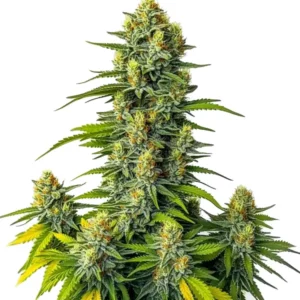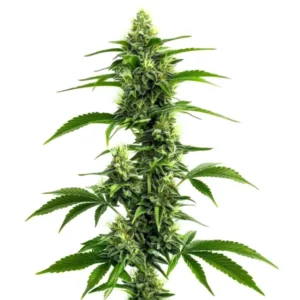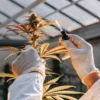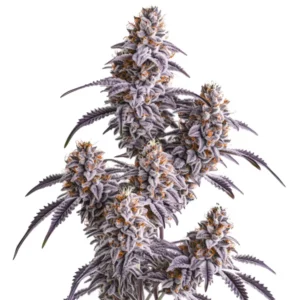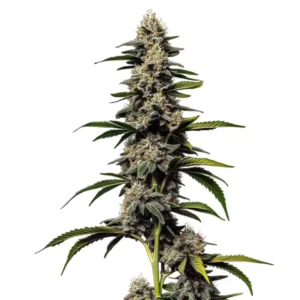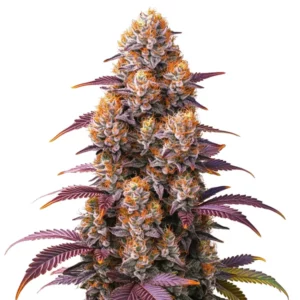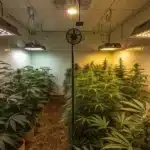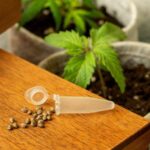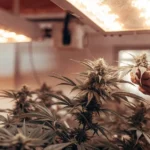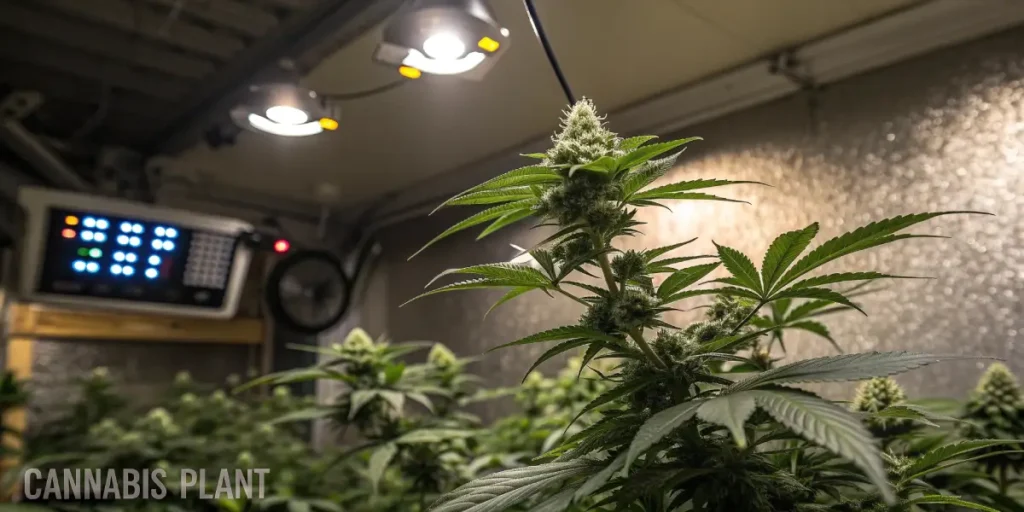
Accidental Flowering During Veg: Causes, Solutions and Prevention Tips
What Causes Accidental Flowering During Veg?
Accidental flowering during veg can puzzle cannabis growers, especially if they’ve carefully monitored their plants. When a plant unexpectedly shifts into flowering mode, it can disrupt the intended growth cycle, potentially impacting yield and cannabinoid content. This issue is more common among beginners but can also occur with experienced cultivators under specific conditions. Knowing why accidental flowering during veg occurs is essential to maintaining healthy, productive plants.
Several factors can trigger flowering during the veg phase, including inconsistencies in light cycles, plant stress, and even genetics. When a plant receives signals that it’s time to flower before the grower intends, it may respond by forming buds prematurely. Identifying these triggers and addressing them promptly can help get the plant back on track for a successful grow cycle.
Recommended Strains
Mamba Negra
|
|
THC | 18% (Medium) |
|
|
Type | Feminized |
|
|
Yield | High |
|
|
Phenotype | 55% Indica / 45% Sativa |
Mamba Negra Auto
|
|
THC | 8% - 15% (Low) |
|
|
Type | Autoflowering |
|
|
Yield | Low |
|
|
Phenotype | 80% Indica / 20% Sativa |
Promos & Deals
Light Cycle Issues and Their Impact on Accidental Flowering
Importance of Stable Light Cycles
For photoperiod cannabis strains, consistent light cycles are crucial in signaling when to grow and when to flower. During veg, plants require 18 to 24 hours of light daily to stay in their vegetative state. Any disruptions in this cycle can lead to accidental flowering during veg, causing the plant to enter flowering prematurely. This response may reduce its potential size and final yield. If the light cycle changes unexpectedly, even briefly, it can confuse the plant’s internal rhythm.
Photoperiod cannabis strains, which rely on specific light and dark periods, are particularly susceptible to light cycle disruptions. To maintain a stable veg phase, it’s essential to keep the lighting consistent, both in intensity and duration. Cultivators should check equipment regularly and consider backup plans, like a battery backup for timers, to avoid unexpected power losses.
Causes of Light Cycle Interruptions
- Power Outages: Sudden power outages can plunge a grow room into darkness or disrupt its lighting, interrupting the plants’ photoperiod. Such events can quickly confuse the plant’s rhythm, leading it to think it’s time to flower.
- Inconsistent Timers: A faulty timer may cause lights to turn off or on at irregular intervals, which can disrupt the plant’s internal clock. Reliable timers are essential for maintaining the right light schedule, especially for photoperiod plants.
- Accidental Light Leaks: Grow spaces need to be fully dark during the dark period. Even a small light leak, like from a doorway or window, can disrupt the plant’s photoperiod and push it into flowering. Ensuring a completely lightproof environment can prevent these unintended signals from causing premature flowering.
Stress-Induced Accidental Flowering
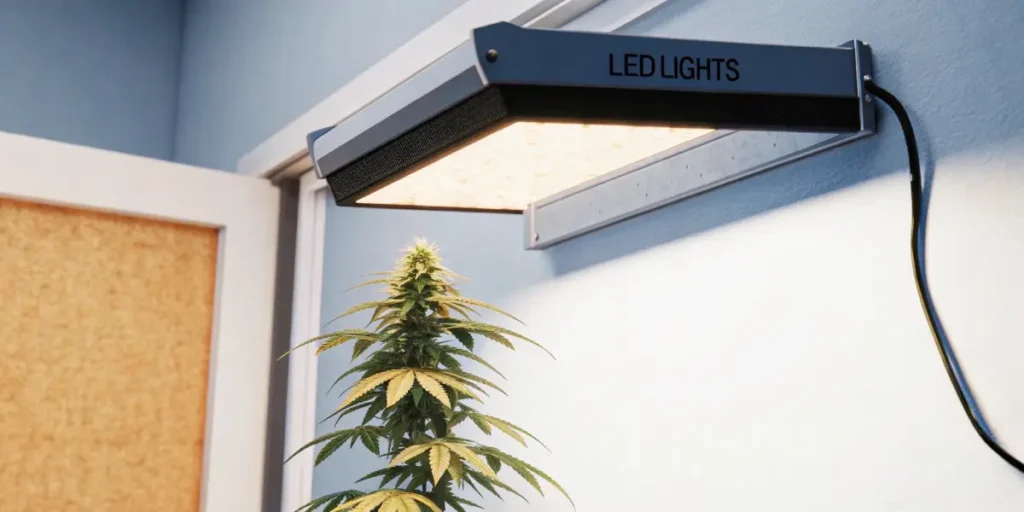
How Stress Affects Plant Hormones
Cannabis plants are highly sensitive to environmental factors, and stress can significantly alter their hormonal balance. When plants experience stress, they may interpret it as a survival threat, which can lead them to enter flowering mode as a last-ditch effort to reproduce. Hormones like ethylene play a role in stress responses, which can cause the plant to shift its growth strategy prematurely.
Common sources of stress, such as physical damage to the plant or extreme temperature fluctuations, can have a profound impact on its growth cycle. Minimizing stress by providing a stable, optimal environment helps keep the plant in the vegetative stage until you’re ready for it to flower.
Common Sources of Stress That Lead to Accidental Flowering
- Physical Damage: Stress from physical damage, such as root pruning, transplanting, or aggressive defoliation, can make the plant think it’s time to flower. When plants lose significant portions of their roots or leaves, they may prematurely attempt to reproduce to ensure survival.
- Temperature Extremes: Drastic temperature changes, particularly sudden drops or extreme heat, can create stress that interferes with the vegetative phase. Keeping grow spaces at stable temperatures within the optimal range helps prevent accidental flowering.
- Nutrient Deficiencies: Nutrient imbalances, especially a lack of nitrogen, can lead to early flowering. Cannabis plants require sufficient nutrients to support vegetative growth. If the plant senses it’s not receiving adequate nutrients, it may transition to the flowering stage to conserve resources.
Genetics and Its Role in Accidental Flowering
Understanding Cannabis Genotypes
Each cannabis plant has a unique genetic makeup, or genotype, that influences its growth and response to environmental cues. Photoperiod strains are particularly sensitive to light cycles, while autoflower strains are designed to flower automatically after a set period, regardless of lighting. Some plants are more resilient to minor light changes, while others may flower at the slightest disturbance. Choosing strains suited to your growing conditions can reduce the risk of accidental flowering.
The choice between autoflower and photoperiod strains impacts how carefully you need to manage light cycles. If accidental flowering is a frequent issue in your setup, you might consider switching to autoflower varieties, which are less affected by light cycle inconsistencies.
Identifying and Choosing the Right Strain
Understanding a strain’s photoperiod requirements is vital for a successful grow. Photoperiod strains need a strict light schedule, whereas autoflowers can tolerate more flexibility. Certain photoperiod strains are more sensitive to light cycle disruptions, so cultivators who struggle with maintaining a consistent environment might benefit from a more resilient strain. It’s also helpful to research strains that have been bred for indoor conditions, as they may handle environmental fluctuations better.
When selecting seeds, look for reputable breeders who clearly label photoperiod versus autoflower varieties. If you’re unsure about a strain’s specific needs, consult with the seed bank or review grower forums to learn about others’ experiences with accidental flowering in that strain.
How to Reverse Accidental Flowering
When accidental flowering during veg occurs, it can be challenging but not impossible to revert the plant back to vegetative growth. This process, known as re-vegging, requires carefully managing light and nutrient conditions to guide the plant back to its veg phase. Successful re-vegging may take several days to weeks, depending on how far along the plant is in the flowering process.
Adjusting Light Cycles
To revert a flowering plant to veg, set the light cycle to 18 to 24 hours of continuous light each day. Increasing light exposure signals the plant to resume vegetative growth. However, re-vegging is a gradual process; you may see irregular growth patterns initially as the plant adjusts back to veg. Be patient, as it may take several days or even weeks before normal growth resumes.
Consistency is key when attempting re-vegging. Avoid sudden changes to light intensity or duration, and monitor the plant closely for signs of stress. Over time, you should start to see vegetative growth return, such as the development of new leaves and stems.
Adjusting Nutrient Intake
Switching back to a nitrogen-rich nutrient formula can further encourage re-vegging. During the vegetative phase, cannabis plants rely on higher nitrogen levels to support leaf and stem growth. Transitioning back to this nutrient balance helps stimulate the necessary growth patterns for the veg stage. Be cautious with the nutrient concentration, as overfeeding can create further stress and delay recovery.
Gradually adjust the nutrient regimen rather than making drastic changes, allowing the plant to acclimate without additional stress. Monitoring the plant’s health during this period is essential; signs of overfeeding, such as yellowing leaves or nutrient burn, may require adjustments.
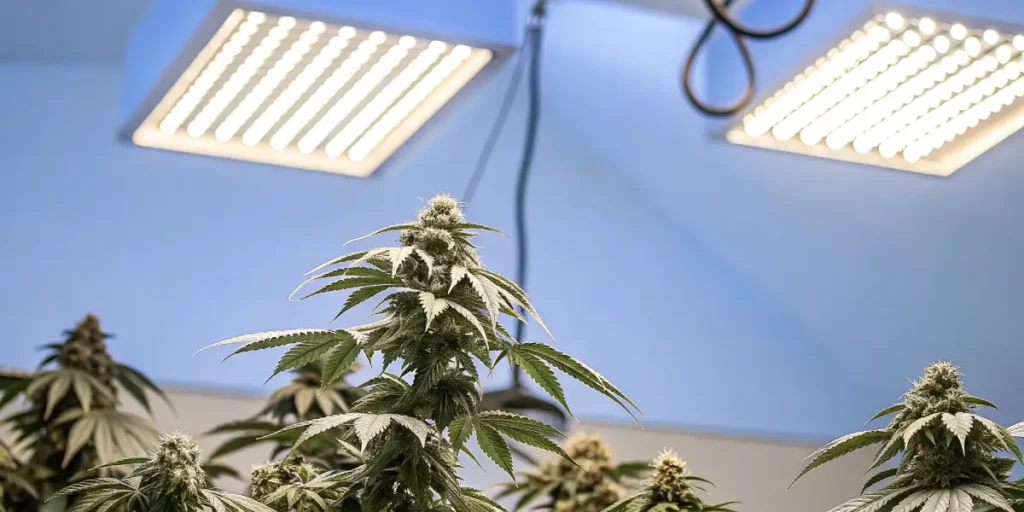
Preventing Accidental Flowering in Future Grows
A proactive approach is essential to prevent accidental flowering during veg in future grows. Knowing common triggers and implementing preventative measures can help maintain healthy plants throughout the veg stage.
Tips for Light Management
- Use Reliable Timers: Investing in high-quality timers minimizes the risk of lighting disruptions. Consistent timers prevent issues like lights turning on or off at incorrect intervals, which can disrupt the light cycle and trigger early flowering.
- Inspect for Light Leaks: Check for cracks or openings where light could enter the grow space during the dark period. Even minimal light exposure can cause photoperiod plants to start flowering. A lightproof grow tent or careful adjustments to windows and doorways can help.
- Backup Power Options: Unexpected power outages can disrupt light schedules. Installing a backup power system, such as an uninterruptible power supply (UPS), can maintain lighting even during short power outages, ensuring the plant’s photoperiod remains consistent.
Creating a Low-Stress Environment
- Temperature Control: Keeping the grow space within the optimal temperature range helps prevent stress. Cannabis plants thrive within specific temperature ranges during each growth phase, and extreme fluctuations can disrupt their growth cycle.
- Balanced Nutrition: Providing a balanced nutrient regimen, particularly in nitrogen levels, helps support vegetative growth and minimizes the risk of premature flowering. Regularly monitoring and adjusting nutrient intake based on the plant’s needs is essential for a healthy veg phase.
- Minimal Handling: Excessive pruning or frequent transplanting can stress plants. Reducing handling and providing a stable environment allows plants to grow without unnecessary stress, reducing the likelihood of accidental flowering.
FAQs About Accidental Flowering During Veg
How can I tell if my plant is accidentally flowering?
Signs of accidental flowering include the early appearance of pistils (small, hair-like structures that indicate budding) and a shift in growth pattern, with the plant becoming more compact or forming clusters of leaves. You may also notice a change in the shape and size of leaves. These changes often indicate that the plant is beginning to produce buds, even if it’s still in the veg phase.
Accidental flowering may also be accompanied by changes in color, as some strains develop different hues during flowering. Regularly checking for these indicators can help you identify if a plant is accidentally flowering early in the veg phase.
Can accidental flowering reduce my final yield?
Yes, accidental flowering often impacts yield and potency, especially if the plant’s growth cycle is interrupted. When a plant enters flowering too soon, it may produce fewer branches and buds, which can reduce the overall yield. Reverting to veg can help, but the process is stressful for the plant and may lower its productivity.
Even if the plant resumes vegetative growth, the interruption may lead to stunted growth or reduced bud quality. Taking preventive measures to avoid accidental flowering is essential for maximizing your plant’s yield and potency potential.
Are there strains more prone to accidental flowering?
Autoflower strains are naturally inclined to flower after a set period, regardless of light cycle, so they aren’t as affected by light changes. However, certain photoperiod strains are highly sensitive to even minor light interruptions and may start flowering prematurely. Robust strains with a strong genetic foundation tend to handle light variations better, making them a suitable choice for beginners or those with inconsistent environments.
If accidental flowering is a concern, consult your seed supplier about strain resilience. Many seed banks offer detailed strain information, which can guide you toward varieties that are less prone to early flowering.
How long does it take for a plant to revert back to veg?
Reverting a flowering plant back to veg can take several days to a few weeks, depending on how advanced it was in the flowering phase. Signs of re-vegging include new leaf growth, particularly single-bladed leaves, and a gradual shift back to a more typical vegetative structure. Ensuring a stable light cycle and a nutrient regimen higher in nitrogen will aid the transition.
During this process, the plant may appear to grow irregularly, with leaves and branches forming unevenly. Be patient and provide consistent care, as it can take time for the plant to fully revert and resume normal growth patterns.



